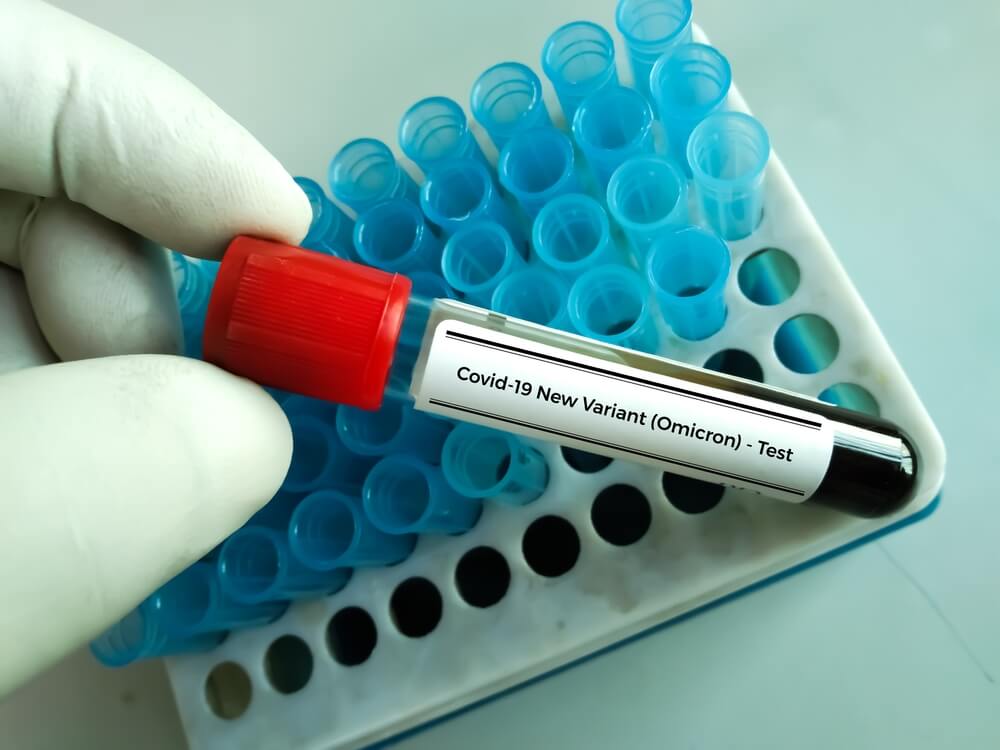A new strain of COVID-19 was found in southern Africa – it forced several countries to restrict air travel and tighten security measures at once. The WHO believes that the new variant is highly likely to spread throughout the world. High-tech is looking into what is known about the new omicron strain and what its symptoms are.
The sense of smell does not disappear, there are unusually many mutations and a high rate of spread – such conclusions are made by international experts and WHO after a preliminary study of the omicron strain of COVID-19.
What is the omicron strain and where does it come from?
Omicron is a novel coronavirus strain. It was first found in South Africa and given the technical name B.1.1.529.
The first reliable information about the strain came from a freelance online briefing hosted by South African Health Minister Joe Faal, along with epidemiological experts. It took place on November 25, 2021, the full entry has been posted.
WHO convened an emergency meeting due to the omicron strain on November 26. It discussed how to classify a new “option of interest”. The letter omicron (ο) was chosen for the name of the strain. At the same time, the previous two letters “nu” and “xi” were missed in WHO. According to representatives of the organization, in the first case, the name of the strain would resemble the word “new” and would confuse people, while in the second it could cause a wave of anti-Chinese hatred and propaganda, since it is similar to the Chinese surname Xi, “Xi”.
Why is the omicron strain dangerous?
Currently, there are no publications about the new strain in reputable medical journals, so all data are preliminary. Despite this, you can select authoritative sources and rely on them.
The set of mutations that occur in the strain is preliminarily known, as well as the genome sequence – there are approximately 180 units. Researchers have so far studied information only on the distribution of the variant in several regions of South Africa.
The new strain turned out to have an unusually large number of mutations, about 50 in the genome itself, 35 of them in the S-protein and 10 in the region in contact with the ACE2 receptor – it is located on the surface of human cells. Other strains, such as beta, have only three mutations in the same region, while delta has two.
Experts conclude that omicron is a hypothetically more infectious strain than other COVID-19 species, and can also avoid antibodies that are “trained” only on the original S-protein used in vaccines.
Experts conclude that omicron is a hypothetically more infectious strain compared to other types of COVID-19.
What are the symptoms of omicron?
We repeat that so far there is no scientific research on the new strain in a representative sample. But experts are already beginning to express their position. For example, professor and member of the independent committee on vaccinations and immunizations, Adam Finn, said that, based on information from South Africa, cases of this strain are not “particularly serious.”
Finn stressed that a person does not lose smells and tastes, but fatigue remains. He also noted an increase in heart rate.
The same information was confirmed by the head of the South African Medical Association, Angelica Coetzee. She stated that she observed situations when a person had a sore throat and complained of a severe headache, but there was no cough. The patient also sensed tastes and smells. Coetzee called these symptoms “mild” and noted that none of those patients who were diagnosed with the omicron strain of coronavirus were hospitalized.
Professor and member of the independent committee on vaccination and immunization, Adam Finn, said that based on information from South Africa, cases of this strain are not “particularly serious.”
How to deal with the omicron strain, do vaccines help against it?
According to a WHO technical report, there are mutations in the structure of the virus that can contribute to its “escape” from vaccines, and therefore give an advantage in spreading. But the organization stressed that existing vaccines remain effective until proven otherwise.
It also became known that the Gamaleya Center began adapting Sputnik V and Sputnik Light to the omicron strain of the coronavirus. It is noted that such modification is probably not required. However, a new version of Sputnik could be ready for mass production in 45 days.
BioNTech said the same: it has begun work with Pfizer to adapt the vaccine. This is part of the standard procedure, the press service noted.
But Moderna CEO Stefan Bansel believes it will take months to research and produce a new version of the vaccine.
In which countries was the omicron strain found?
According to information on November 29, the strain was found in residents of South Africa, Botswana, Egypt. Also, imported cases were recorded in residents of Hong Kong, Israel, Belgium, Czech Republic, Germany, Great Britain, Italy, Australia, Portugal, Scotland, and the Netherlands. The first cases of infection were suspected in France, Switzerland and Austria. There is no information on the total number of infected yet.
Does Russia already have an omicron strain?
So far, there is no such information. On November 28, Russia decided to restrict the entry of foreigners from South Africa, Botswana, Lesotho, Namibia, Zimbabwe, Mozambique, Madagascar and Eswatini, as well as from Hong Kong.
New restrictive measures will soon become known, the headquarters said.
The new strain is of concern to the world expert community, but so far we do not have objective data on the basis of which it can be unambiguously concluded that the new omicron variant poses an increased threat.
So far, according to the WHO report, the same rules apply to the fight against the new strain of COVID-19 as in the case of the rest: wear a mask, wash hands and reduce social contact if possible.









